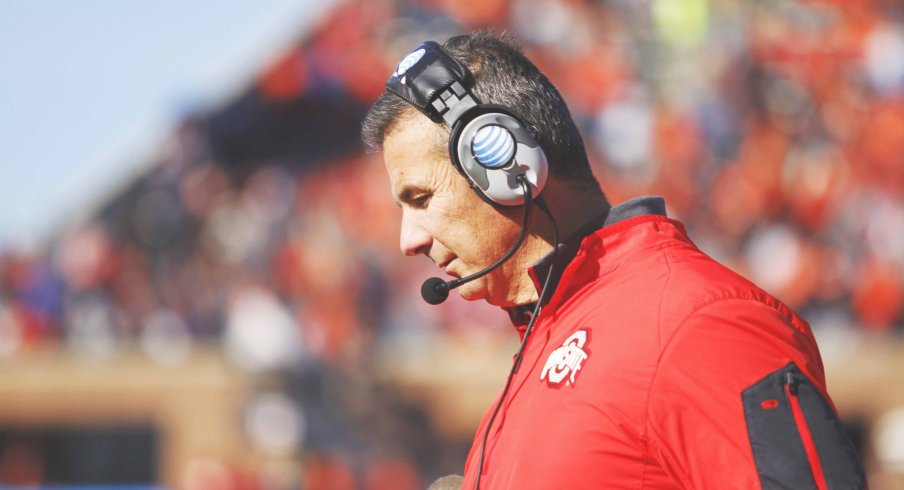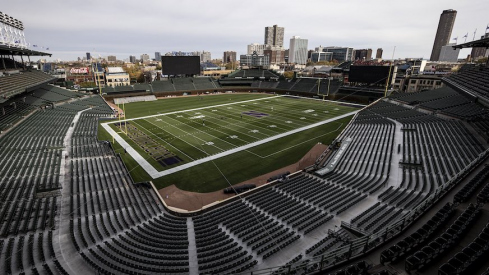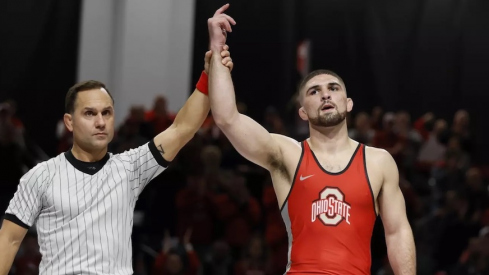Let's stop looking at the past.
In the past two weeks, we've explored the history of what has become the definitive contest in the Big Ten, the Ohio State Buckeye offense against the Michigan State Spartan Defense. In 2014, the Buckeyes gained the upper hand on the road in East Lansing by stretching the field vertically with Devin Smith, allowing Ezekiel Elliott and the running game to take hold in the second half. A year later, the Spartans returned the favor in Ohio Stadium by winning individual battles in the trenches, letting their secondary to play far more conservative than normal, keeping the Buckeyes to a meager 14 points at home in the process.
While countless stars from both squads have moved on to the NFL, the teams will be still be led by Urban Meyer and Mark Dantonio, leading each side to circle this fall's matchup far in advance. Despite a wave of attention disguised as momentum moving in the direction of Ann Arbor this spring, the Big Ten title will almost assuredly be decided in East Lansing on Nov. 19, thanks to the program-building efforts of both coaches.
For Meyer's side to claim victory once again, he'll have to find a way to successfully attack one key area in Dantonio's famous 'Quarters' defense. Due to the extra distance between hash marks in College Football compared to the NFL, NCAA offenses can stretch defenders on the wide side of the field, effectively forcing zone defenses like MSU's to declare their intentions before the ball is ever snapped.
When the Buckeyes lined up multiple receivers to that wide side from 2012 to 2014, the Spartans responded by walking an outside linebacker to the 'alley' between the interior linemen and the split wide-outs, and leaving a safety near the line of scrimmage to help stop the run. After the Buckeyes exposed that safety's deep coverage ability in their 2014 victory, the Spartans responded the following year by swapping roles between the linebacker and the box safety, regularly playing with all three linebackers in the box to stop the OSU running game in a gambit that paid off.
It's impossible to know what Meyer and his play-caller, Ed Warinner, may have in store for the next tilt with the Spartans, especially given the personnel questions that must be addressed (specifically which receivers will emerge as J.T. Barrett's top targets). However, it's clear that they'll look to stress the flat area to the wide side, forcing the outside linebacker to get back out of the box, opening up the interior running game that makes up the foundation of Meyer's offense.
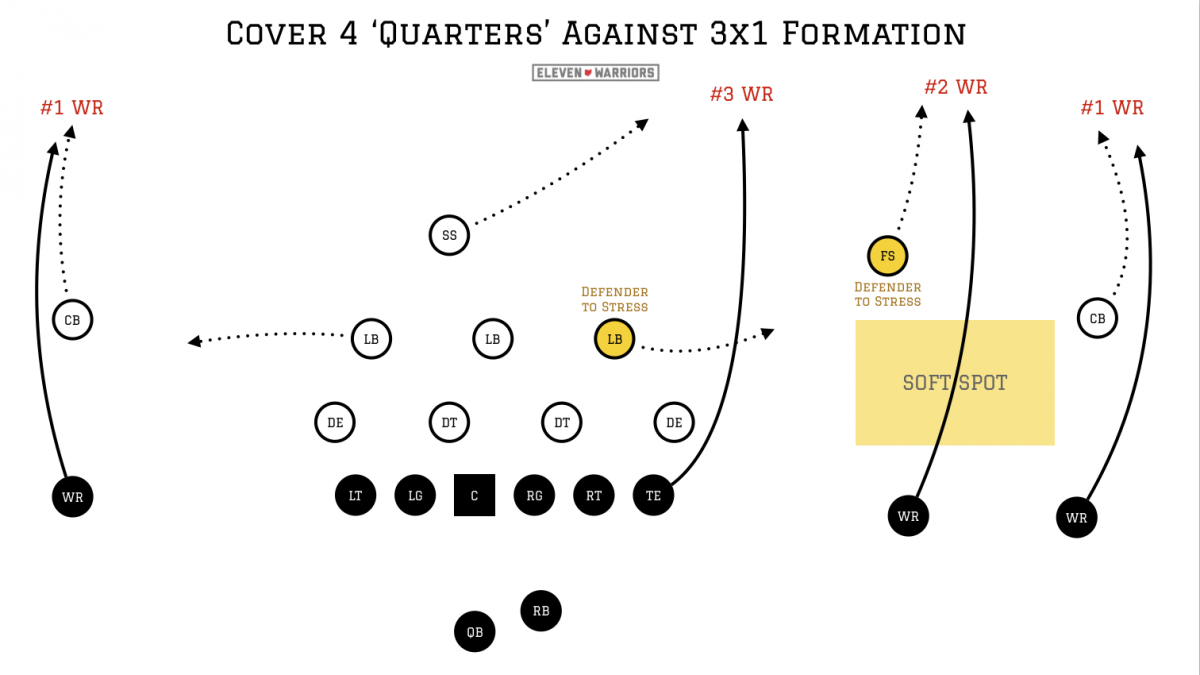
To do so, they must force the Spartans to defend an extra receiver to that side after first vacating the area initially occupied by the outside (#1) receiver and the corner responsible for covering him. With that in mind, let's explore three ways the OSU offense can expose that all-important soft spot to the wide side:
Running Back Swing Passes
Though Ezekiel Elliott was regularly involved in the Buckeye passing game throughout the past two seasons, catching 55 passes in that span, the star running back failed to ever record a reception against the Spartans. While there may have been a reason in the past for failing to call for this concept, it appears to be a glaring opportunity for whoever fills his shoes this fall.
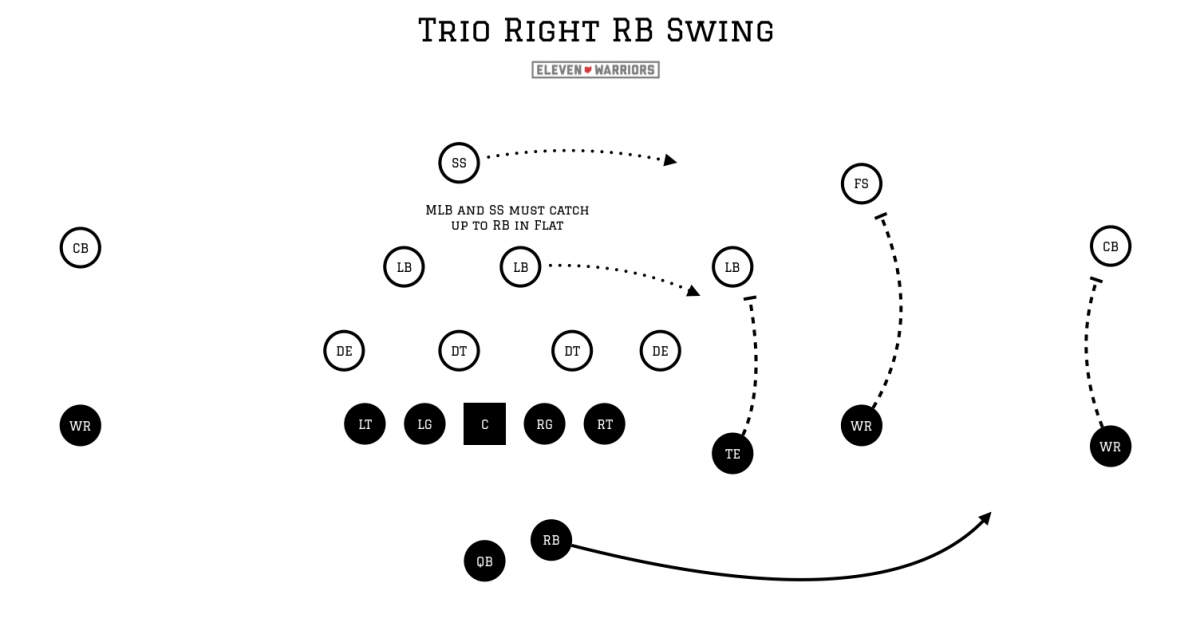
Assuming the three receivers to the wide side in a 'Trio' formation are able to hold their blocks, the middle linebacker and safety opposite the play become the closest unblocked players to a shifty player like Curtis Samuel in the open field.
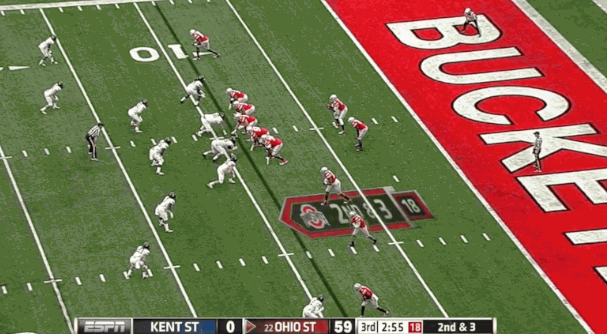
Not only does this play-call give the the quarterback an easy throw to help get him in rhythm (something dearly lacking in Barrett's 2015 performance against MSU), it stretches the linebackers horizontally at the first hint of the back leaking out, opening them up to a potential quarterback draw later.
The 'Houston' Concept
This route combination of an outside curl from WR #1, a deep vertical route from #2, and a flat pattern from #3 has long been a basic concept found in playbooks for decades. Meyer has included it in his going back to his time at Bowling Green and Utah, and called for it as part of his 2012 game plan against the Spartans.
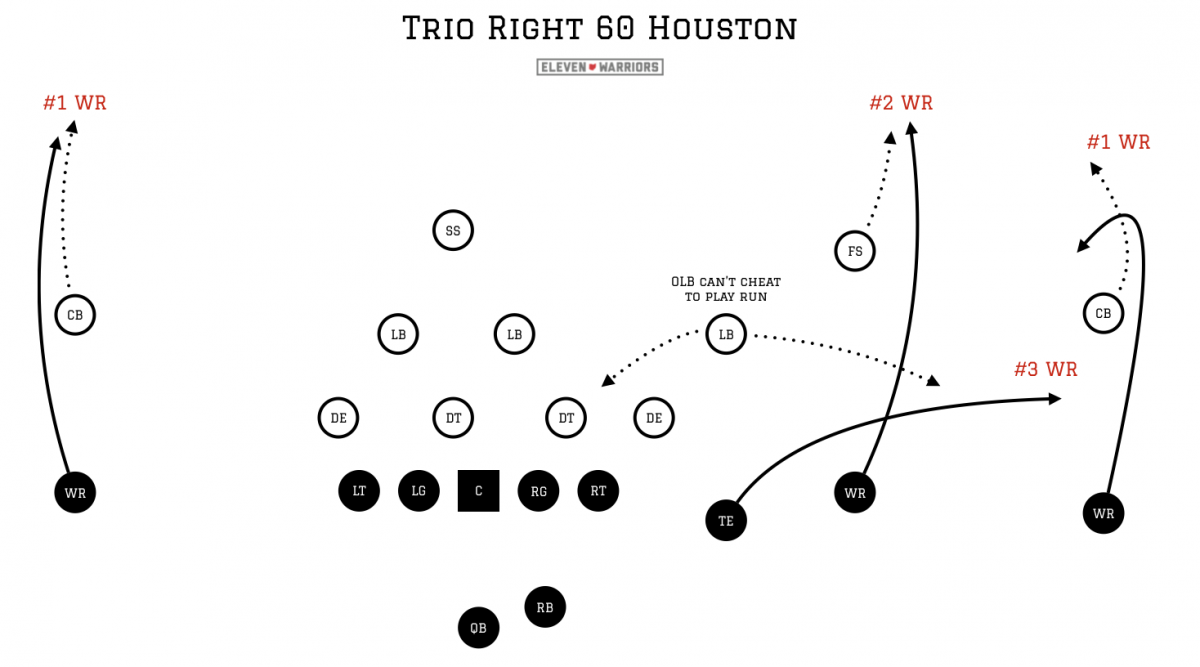
The two players stressed in this concept are the outside linebacker and corner, especially when this is called as a play-action pass. The safety is responsible for the #2 receiver and will follow as soon as he goes vertical. But if the linebacker incorrectly jumps the fake handoff, he's far out of position and has to chase the #3 receiver on the flat route. If he's slow to get out in coverage at all, the corner is left with two receivers to cover on the outside, and will almost always choose the deeper of the two, leaving the flat open.
Though this example is against a different coverage (Cover 3) than what the Buckeyes can expect from the Spartans, it shows the easy high-low read along the sideline for the QB. You can read more about the concept HERE.
Mixing Mills with Stick
One concept we don't see very often from Meyer's offenses is one made famous by another famous Florida coach, Steve Spurrier. 'Mills' features a deep post route from the #1 receiver with a deep 'dig' crossing route, and devastated the popular Cover 3 defenses of the 1990s.
Its usage has declined as that coverage fell out of favor in the two decades since, but Ole Miss head coach Hugh Freeze found success by combining it with a 'stick' route from his #3 WR.
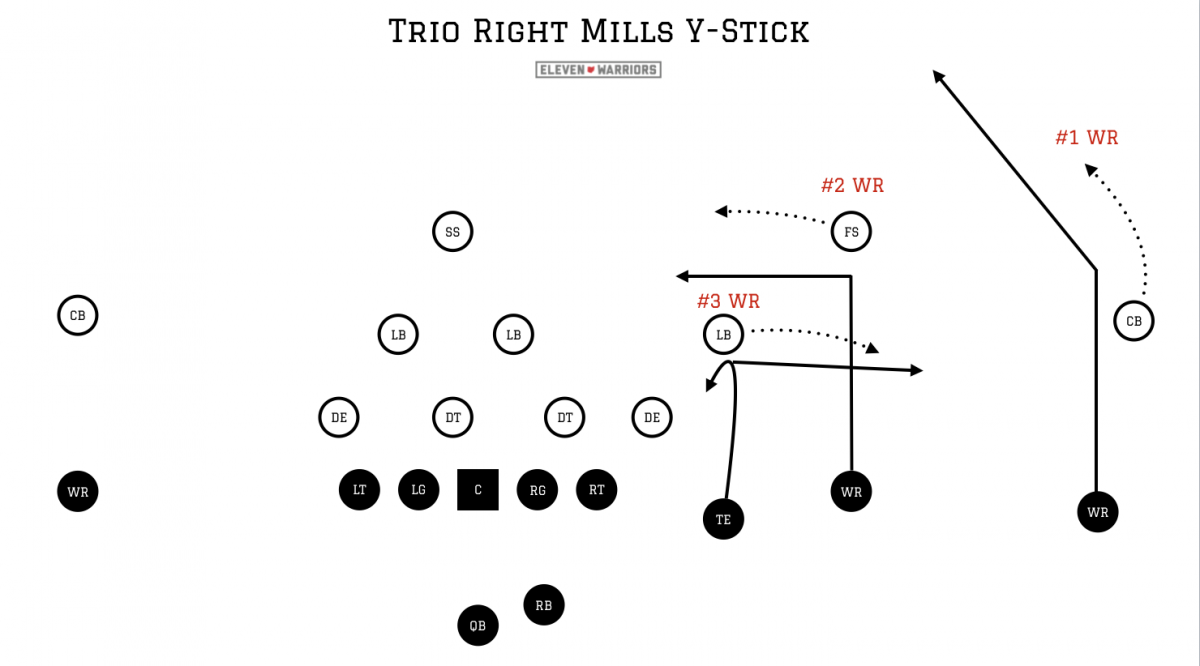
Freeze has been one of the few SEC coaches to find any success against Alabama's vaunted pass defense, but this route combination gashed the Tide by creating a triangle to the wide side. Unfortunately for the defense, by following their assignments on the #2 and #3 receivers, no one is in the middle of the field to help the corner handle the deep post route.

Offenses have been looking to create these triangles in the passing game for decades, thanks to the mind of Bill Walsh (of course). As Chris B. Brown explains,
"Walsh realized that you could combine the horizontal and the vertical stretch to create a kind of “new” stretch, though one made up of both of Gillman’s first two categories. Moreover, Walsh often combined the two zone beaters — the horizontal and vertical stretch — with the third category, the man beating concept, into a single “triangle” read that also was designed to defeat man coverage. If the perfect pass play was the Holy Grail of modern football, then the triangle is its best personification to date and Walsh its Galahad."
The only way to defend well-executed triangle route combinations like this one are to roll the entire coverage to the three-receiver side, effectively turning a zone coverage into man-to-man. That is the exact reaction Meyer desires to see from the Spartans of course, as such a counter-move would let him do exactly what he wants: to pound the ball inside.
